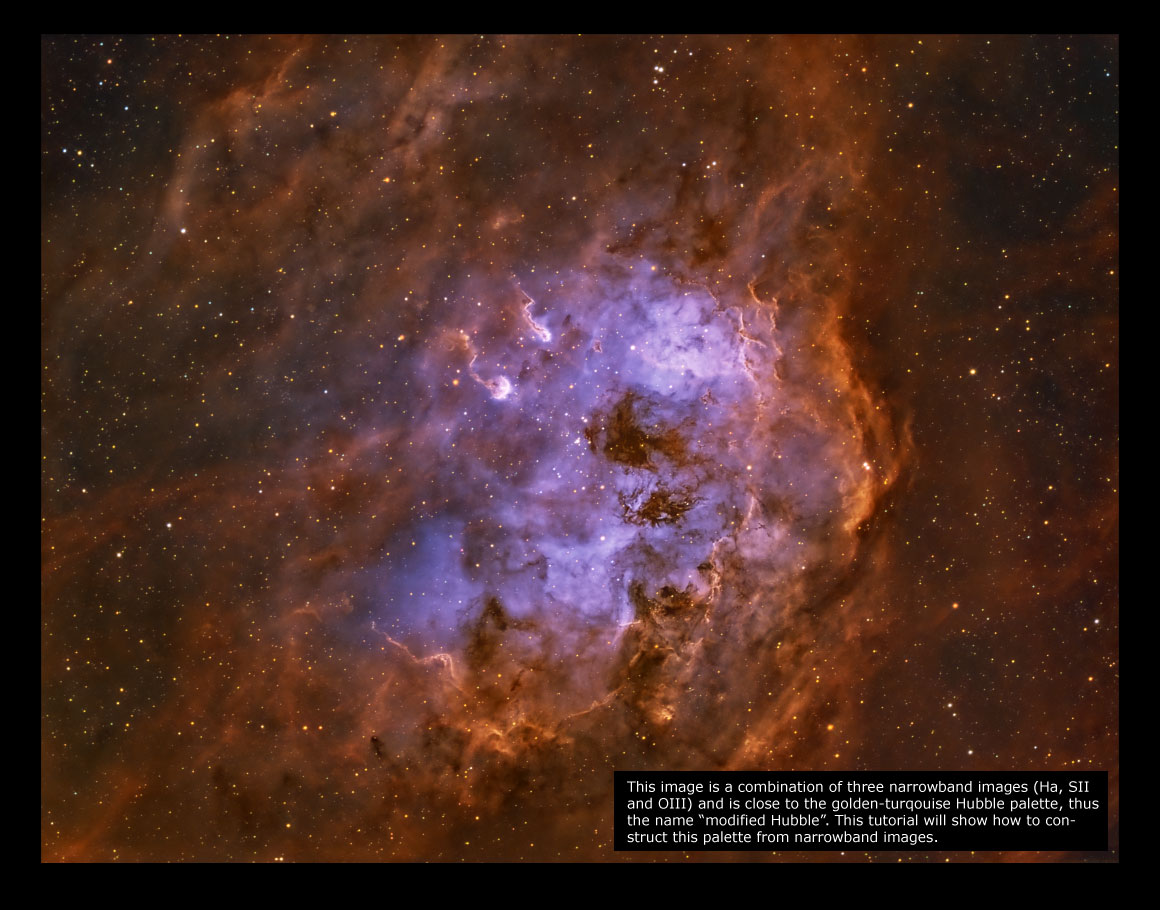By mouseover on the text above in the order indicated by the arrows you can follow the tutorial.
The most common ways to combine three narrowband images (Ha, SII and OIII) is, either, the according to the Hubble palette or by trying to mimic a real RGB image. In the Hubble palette one would assign Ha to the green, SII to the red, and OIII to the blue channel respectively. Due to the dominance of Ha in many nebulas this will result in a completely green image. There are two ways to better show the different regions in the nebula, i.e. where the Ha is, where the OIII is etc.
The first method is to compensate for the weak SII and OIII signals by stretching these channels so that their histograms roughly equals that of the Ha channel. This is sometimes called the base Hubble palette. However sometimes one might want to even more emphasize the difference between the different regions. This can be achieved by the, sometimes called golden-turquoise Hubble palette. Bob Frankes have an excellent tutorial on how to make this combination.
The basic way the golden-turquoise palette is obtained is to use the Selective Color tool in Photoshop to separate the colors. One difficulty with this method is that, if not done carefully, it might introduce sharp borders between colors which will look strange.
The above shown method of color mapping the narrowband images has the advantage of not being dependent on the Selective Color tool. The color combination is not golden-turquoise but it meets the purpose of better separating the different regions.
One should keep in mind that there is nothing right or wrong in how to color map narrowband images. It all depends on the purpose of the imager, be it purely aesthetic (good looking) or the wish to show something special (like where the OIII regions dominate, which would indicate a higher energy level such as a star or star cluster).
© 2011 Matts Sporre


